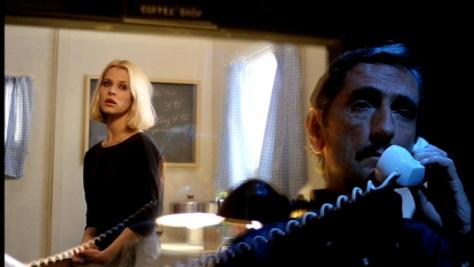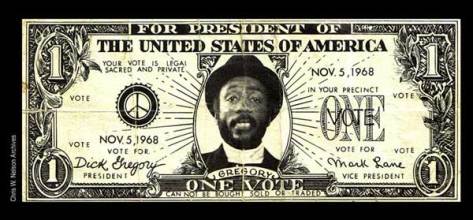By Dennis Hartley
(Originally posted on Digby’s Hullabaloo on September 17, 2017)

Harry Dean Stanton died on September 15. Who? You know…the guy who was in the thing. He was 91 years old, but that’s a moot point. He fell out of his crib careworn and world-weary. That is not intended to be a flip observation. He was timeless, and will remain so. Most people couldn’t pick him out of a lineup; but as soon as you put him in front of a camera, you could not miss the story in his eyes. It was the story of humanity.
He was born in Kentucky in 1926; his mother was a cook and his father a barber and tobacco farmer. He served in WW 2 as a Navy cook (he was on a tank landing ship in the Battle of Okinawa), and after the war cut his teeth as an actor working with the Pasadena Playhouse.
He made his screen debut in 1957 in a forgettable western, which nonetheless led to a fairly steady stream of small movie parts and television work. Still, he obviously stood out to casting directors, who started to get him progressively meatier parts from the mid-60s onward. He never stopped working; you may have seen him in David Lynch’s recent Twin Peaks revamp on Showtime, and was quite memorable in HBO’s Big Love.
It didn’t matter whether he played a convict on a chain gang, a 1940s L.A. homicide detective, street corner preacher, repo man, crew member on a space merchant vessel, ranch hand, mysterious drifter, or Molly Ringwald’s dad in a teen comedy…from the moment his character popped on screen, there was something all at once familiar about him.
Of course he was a trained actor; but I’ll be damned if I ever saw him “act”. He simply “was”…and it worked. I don’t think he sweated the small stuff, and that was his secret. Like all the great actors, he just let it happen. That is not to say that he didn’t focus on the work. From accounts I have read, he could be “difficult” with directors; but not to appease his own ego, rather always in service of the character he was playing. He wanted to get it “right”. From my observation, he never failed to. Here are my top 10 film picks:

Cool Hand Luke– “Still shakin’ the bush, boss!” Paul Newman shines (and sweats buckets) in his iconic role as the eponymous character in this 1967 drama, a ne’er do well from a southern burg who ends up on a chain gang. He gets busted for cutting the heads off of parking meters while on a drunken spree, but by the end of this sly allegory, astute viewers will glean that his real crime is being a non-conformist. Stuart Rosenberg directs; sharp script by Donn Pearce and Frank Pierson. Highlights include Strother Martin’s “failure to communicate” speech, Harry Dean Stanton singing “The Midnight Special”, that (ahem) car wash scene and George Kennedy’s Best Supporting Actor performance.

Rancho Deluxe– This criminally underappreciated 1975 Frank Perry comedy-drama sports a marvelously droll original screenplay by novelist Thomas McGuane. Jeff Bridges and Sam Waterston star as a pair of modern-day cattle rustlers in Montana. Great ensemble work from the entire cast, which includes Elizabeth Ashley (her best role), Slim Pickens, Clifton James, and Harry Dean Stanton as a bumbling cow hand. Stanton’s part is relatively minor, but it showcases the fact that he had a talent for understated comedy.

Farewell, My Lovely– This 1975 entry, one of a relative handful of films directed by renowned 1960s photographer/TV ad creator Dick Richards, is an atmospheric remake of the 1944 film noir Murder My Sweet (both films were adapted from the same Raymond Chandler novel). Robert Mitchum is at his world-weary best as detective Philip Marlowe, who is hired by a paroled convict (Jack O’Halloran) to track down his girlfriend, who has made herself scarce since he went to the joint. Per usual, Marlowe finds himself in a tangled web of corruption and deceit. Also featuring Charlotte Rampling, John Ireland, and Sylvia Miles. Stanton is memorable as a perpetually pissed off homicide detective.

Straight Time– Ulu Grosbard (The Subject Was Roses, True Confessions) delivers one of the finest character studies of the late 70s with this gritty 1978 portrait of a paroled burglar (Dustin Hoffman) trying to keep his nose clean. Unfortunately, his goading parole officer (M. Emmett Walsh) is bent on tripping him up. One thing leads to another, and it’s back to a life of crime. Excellent performances abound, from the likes of Theresa Russell, Gary Busey, Kathy Bates, and Stanton (as one of Hoffman’s partners-in-crime).

Wise Blood– One of director John Huston’s finer latter-career films, this 1979 comedy-drama was adapted by Benedict Fitzgerald from a Flannery O’Connor novel. Brad Dourif stars as a young dirt-poor Southerner who is desperate to make his mark on the world. He decides that the quickest shortcut to grab the public’s attention is to become a crusading, fire-and-brimstone preacher. Stanton is simply wonderful here as a veteran street corner proselytizer (and con man) who mentors the young man in the ways of spiritual hustling.

Alien– Ridley Scott’s first (and best) entry in what has become a never-ending (albeit lucrative) franchise is the least bombastic and most character-driven of the series. This 1979 sci-fi thriller concerns the workaday crew of a space merchant vessel who are forced to deal with the, erm, complications that ensue after the discovery of an otherworldly stowaway on board. It’s a taut, nail-biting affair from start to finish, with outstanding production design. A great cast helps: Sigourney Weaver, Tom Skerrit, John Hurt, Ian Holm, Yaphet Kotto, Veronica Cartwright, and of course, Harry Dean Stanton!

Escape from New York– John Carpenter directed this 1981 action-thriller set in the dystopian near-future of 1997 (ah, those were the days). N.Y.C. has been converted into a penal colony. Air Force One has been downed by terrorists, but not before the POTUS (Donald Pleasence) bails in his escape pod, which lands in Manhattan, where he is kidnapped by “inmates”. The police commissioner (ever squinty-eyed Lee van Cleef) enlists the help of Snake Plissken (Kurt Russell), a fellow war vet who is now one of America’s most notorious criminals.
Imaginative, darkly funny and entertaining, despite an obviously limited budget. Carpenter and co-writer Nick Castle even slip in a little subtext of Nixonian paranoia. Also with Ernest Borgnine, Adrienne Barbeau, Isaac Hayes (the Duke of N.Y.!), and Stanton, who steals all his scenes as “Brain”. Carpenter also composed the theme.

Repo Man– This 1984 punk-rock/sci-fi black comedy version of Rebel without a Cause is actually one of the more coherent efforts from mercurial U.K. filmmaker Alex Cox. Emilio Estevez is suitably sullen as disenfranchised L.A. punk Otto, who stumbles into a gig as a “repo man” after losing his job, getting dumped by his girlfriend and deciding to disown his parents. As he is indoctrinated into the samurai-like “code” of the repo man by sage veteran Bud (Harry Dean Stanton, in another masterful deadpan performance) Otto begins to realize that he’s found his true calling.
A subplot involving a mentally fried government scientist on the run, driving around with a mysterious, glowing “whatsit” in the trunk is an obvious homage to Robert Aldrich’s 1955 noir, Kiss Me Deadly. Cox tosses a UFO conspiracy into the mix, and makes good use of L.A. locations. The fabulous soundtrack includes Iggy Pop, Black Flag, and The Circle Jerks.

Paris, Texas– What is it with European filmmakers and their obsession with the American West? Perhaps it’s all that wide open space, interpreted by the creative eye as a blank, limitless canvas. At any rate, director Wim Wenders and DP Robby Muller paint themselves a lovely desert Southwest landscape for this enigmatic, languidly paced 1984 melodrama (written by Sam Shepard and L.M. Kit Carson). With Shepard on board, you know that the protagonist is going to be a troubled, troubled man-and nothing says “rode hard and put up wet” like the careworn tributaries of Harry Dean Stanton’s weather-beaten face.
In what is arguably his career-best performance, he plays a man who has been missing for 4 years after abandoning his wife (Nastassja Kinski) and their young son. One day he reappears, with a tight-lipped countenance and a 1000-yard stare that tells you this guy is on a return trip from out where Jesus lost his shoes. Now it’s up to his brother (Dean Stockwell) to help him assemble the jigsaw. Stanton delivers an astonishing monologue in the film’s denouement that reminds us what a good actor does.

Pretty in Pink– This may be damning with faint praise, but I have always found this 1986 film to be the most enjoyable and eminently watchable of the otherwise interchangeable slew of John Hughes teen dramedies that inundated theaters in the 1980s. Actually, Hughes did not direct this one (he handed that chore over to Howard Deutch)…but it remains very much a “John Hughes film”.
Molly Ringwald stars as a young woman from the poor side of the tracks who gets wooed by a “preppie” from a well-to-do family (Andrew McCarthy). Their respective peers are very disapproving. Much romantic angst ensues; but lots of laughs as well. At its heart, it’s a sweet story, helped by excellent performances. Stanton (out of place as he may seem) lends realism to the proceedings as Ringwald’s father; the scenes they share exude genuine warmth.

























 Or a troll under a bridge, crushing a VW bug in his huge maw:
Or a troll under a bridge, crushing a VW bug in his huge maw:
